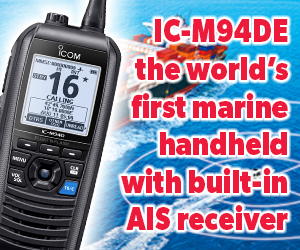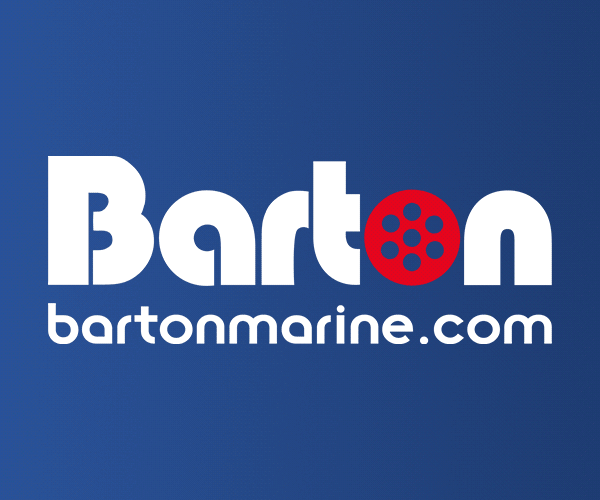












Boats for sale
| Free mast for Merlin Rocket - has a bend! Guildford |
 |
| Rossiter Pintail Mortagne sur Gironde, near Bordeaux |
 |
List classes of boat for sale |
Trapezing and Windward Boat |
Post Reply 
|
Page <12345> |
| Author | ||||||
sargesail 
Really should get out more 
Joined: 14 Jan 06 Location: United Kingdom Online Status: Offline Posts: 1459 |
 Post Options Post Options
 Quote Quote  Reply Reply
 Topic: Trapezing and Windward Boat Topic: Trapezing and Windward BoatPosted: 31 Mar 22 at 2:35pm |
|||||
You’re not a trapeze crew are you? It’s actually really hard to look into that space behind you! So I was talking about 16.1 in the post above at 1842. Does L break rule 14 if she brings the boat upright into ty mast of a windward boat above her hull? If there isn’t some leeway for L why does the word ‘reasonable’ feature in the rule? I was referring to US65 because of the double incident concept…..my point being that it would be hard for 14b not to apply unless there were something which made it 2 incidents. Sorry for the confusion Edited by sargesail - 31 Mar 22 at 2:41pm |
||||||
 |
||||||
davidyacht 
Really should get out more 
Joined: 29 Mar 05 Online Status: Offline Posts: 1345 |
 Post Options Post Options
 Quote Quote  Reply Reply
 Posted: 31 Mar 22 at 4:12pm Posted: 31 Mar 22 at 4:12pm |
|||||
|
I don't think you need to be trapezing, historically I can recall several occasions where hard hiking after the start would have my head in the boat to windward's jib. I don't think I am allowed to do that now, but it did make the point without causing damage.
|
||||||
|
Happily living in the past
|
||||||
 |
||||||
Guests 
Guest Group 
|
 Post Options Post Options
 Quote Quote  Reply Reply
 Posted: 31 Mar 22 at 7:20pm Posted: 31 Mar 22 at 7:20pm |
|||||
|
A leeward boat sailing upwind on stbd tack with no obstructions near by has every right of way going. Why (and how) would they expect to look over their shoulder to see if they were in close contact with another boat, knowing that they must be right of way boat over any other? Surely if L can’t sail her normal course in her normal manner (i.e. with possibility of needing to trapeze) then W isn’t keeping clear?
|
||||||
 |
||||||
Brass 
Really should get out more 
Joined: 24 Mar 08 Location: Australia Online Status: Offline Posts: 1151 |
 Post Options Post Options
 Quote Quote  Reply Reply
 Posted: 31 Mar 22 at 10:11pm Posted: 31 Mar 22 at 10:11pm |
|||||
No I'm not. That's no doubt what the guys behind the big assy in Case 107 said. It didn't wash.
I don't know why: nobody has ever said that L changed course. You said
I agree with that.
Yes. It was reasonably possible for L to not bring her boat upright, therefore it was reasonably possible for her to avoid contact. The test is not was the action [of bring the boat upright] reasonable. The test is was it reasonably possible not to bring the boat upright. Coming back to rule 16. Educate me about pulling the trigger. Does pulling the trigger necessarily involve changing course? Is that what's bubbling along about this rule 16 stuff? Can it reasonably be argued that pulling the trigger: * usually involves changing heading from slightly below CH to CH? OR * by accelerating and the action of the centreboard as the boat comes upright, involves the boat's track moving ahead and to windward (thus changing course)? |
||||||
 |
||||||
Brass 
Really should get out more 
Joined: 24 Mar 08 Location: Australia Online Status: Offline Posts: 1151 |
 Post Options Post Options
 Quote Quote  Reply Reply
 Posted: 31 Mar 22 at 10:15pm Posted: 31 Mar 22 at 10:15pm |
|||||
We usually treat the coming together, with all the rules 11 14, 16 implications as one incident. It's something, all connected, happening within a few seconds. What sort of 'something which made it two incidents' did you have in mind? |
||||||
 |
||||||
Mozzy 
Far too distracted from work 
Joined: 21 Apr 20 Online Status: Offline Posts: 209 |
 Post Options Post Options
 Quote Quote  Reply Reply
 Posted: 01 Apr 22 at 12:53pm Posted: 01 Apr 22 at 12:53pm |
|||||
|
This is something that pops up a lot sailing the 800. Boats sailing in from behind tight to you, but not enough space for them to step out on the trapeze or for the windward boats leeward tiller to drop to leeward at they try to head up.
Also remind me of a story from the 29er fleet. Not long after the start the leeward boat dropped their main sheet and capsized to windward. The tip of their mast tore through the windward boats sail. They finished the race, but had to go in for the next one to switch sails. The windward boat then applied for redress.. and not only was not reinstated to the second race, but was disqualified from the first race for not keeping clear (leeward boat didn't change course). |
||||||
 |
||||||
sargesail 
Really should get out more 
Joined: 14 Jan 06 Location: United Kingdom Online Status: Offline Posts: 1459 |
 Post Options Post Options
 Quote Quote  Reply Reply
 Posted: 01 Apr 22 at 2:54pm Posted: 01 Apr 22 at 2:54pm |
|||||
Yes it would be my expectation that it would be treated as a single incident. I guess two incidents might be if L altered course as a result of the initial contact and that W made it clear that it had two protests? |
||||||
 |
||||||
sargesail 
Really should get out more 
Joined: 14 Jan 06 Location: United Kingdom Online Status: Offline Posts: 1459 |
 Post Options Post Options
 Quote Quote  Reply Reply
 Posted: 01 Apr 22 at 3:05pm Posted: 01 Apr 22 at 3:05pm |
|||||
No I don’t think that can be reasonably argued as a general rule. Albeit it seems to underpin some posters’ views in this thread it is not the case that a trigger pull necessarily involves a change of course. It would be wrong for a PC to assume that it did. On the last question of the CB levering the boat’s track to windward, I would say that on very many occasions that I have watched Opis trigger pulling, where W asserted that L had changed course, in 90% of cases it was not magic movement to windward by L but a less good trigger pull by W resulting in W continuing to slide to leeward. Which to W felt like magic by L! Crabbing….now that is another matter….. |
||||||
 |
||||||
sargesail 
Really should get out more 
Joined: 14 Jan 06 Location: United Kingdom Online Status: Offline Posts: 1459 |
 Post Options Post Options
 Quote Quote  Reply Reply
 Posted: 01 Apr 22 at 3:09pm Posted: 01 Apr 22 at 3:09pm |
|||||
I imagine that felt fairly harsh to W! But I think that degree of ‘protection’ to L is appropriate, especially in our start line trapezing contact example. |
||||||
 |
||||||
423zero 
Really should get out more 
Joined: 08 Jan 15 Location: United Kingdom Online Status: Offline Posts: 3420 |
 Post Options Post Options
 Quote Quote  Reply Reply
 Posted: 01 Apr 22 at 7:46pm Posted: 01 Apr 22 at 7:46pm |
|||||
|
You are talking a sizeable space to allow for L boat to be able to capsize without touching W, seems to be a gamble by W on a crowded start line, perhaps RO should call any boats that are to close ?
|
||||||
|
Robert
|
||||||
 |
||||||
Post Reply 
|
Page <12345> |
| Forum Jump | Forum Permissions  You cannot post new topics in this forum You cannot reply to topics in this forum You cannot delete your posts in this forum You cannot edit your posts in this forum You cannot create polls in this forum You cannot vote in polls in this forum |
Bulletin Board Software by Web Wiz Forums® version 9.665y
Copyright ©2001-2010 Web Wiz
Change your personal settings, or read our privacy policy
Copyright ©2001-2010 Web Wiz
Change your personal settings, or read our privacy policy











 Printable Version
Printable Version Delicious
Delicious Digg
Digg Facebook
Facebook Furl
Furl Google
Google MySpace
MySpace Newsvine
Newsvine reddit
reddit StumbleUpon
StumbleUpon Twitter
Twitter Windows Live
Windows Live Yahoo Bookmarks
Yahoo Bookmarks Topic Options
Topic Options